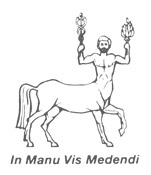
McTimoney Chiropractic
in Bath and Wiltshire
Phone: 01225 421231 or 07968 396303
Email: katya@mctimoneyinbath.co.uk



Following a chiropractic treatment in 1942 John McTimoney became fascinated by chiropractic, still a very little known therapy in Britain. He was struck by the logic of its philosophy of cause and effect and became eager to learn it himself.
As an engineer, John McTimoney began to look at the techniques he had been taught, and started to develop his own approach and technique variations. One such adjustment was known as the toggle-recoil, which he then developed into his own variation, the toggle-torque-recoil which consists of an extremely light and fast movement. The toggle is the thrust, the torque is applied during the thrust and the recoil is the immediate removal of the practitioner's hands, allowing the patient's body to react by itself, so that the adjustment is not imposed upon it. It is a means of gently, and usually painlessly, persuading the bone to return to its correct resting position without forcing or stressing the joint or the body.
McTimoney taught, as DD Palmer had before him, that health depends on healthy nerve messages, that subluxations of the vertebrae or other joints interfere with these, and that such subluxations can affect not only joints and muscles, but every cell and organ in the body. He also stressed what would one day be called holism: that human beings are not purely physical but mental, emotional and spiritual beings as well, and that treating the whole body restores health to all these aspects of the patient.
For more information please visit the McTimoney Chiropractic Association website.
Back to topMcTimoney chiropractic's relatively gentle technique means that people of all ages can benefit, from babies to the older adult, even if you suffer from osteoporosis. Pregnant women often find it useful as a way to make carrying the baby more comfortable and preparing the body for the birth. McTimoney can help you & your body adjust to its changing posture as the baby develops.
Back to topA first visit to us will last around an hour and a quarter and involves both a consultation and first treatment. This is because your chiropractor has to take a full history from you, surrounding both the condition you have presented with and any past medical history. It may also be necessary to undertake a very short neurological exam involving looking at the cranial nerves and things like reflexes as well as a basic health screen including blood pressure and pulses. It is necessary to investigate these areas the first time we see you to ensure it is safe to treat you and that McTimoney chiropractic is the best option for you. A closer exam of the problematic area will be undertaken to ensure the presenting condition is understood and the results of the exam will be explained to you. If you are happy to proceed then a full treatment will follow.
Back to topThe McTimoney approach to chiropractic is based on a whole body assessment of the individual, concentrating not only on structural misalignments and subluxations, but also on their general wellbeing and quality of life. As the body works as a whole, it seems clear that it should be treated as a whole, and whilst it is certainly true that people usually seek relief from pain, the aim of a McTimoney chiropractor is to stimulate the body's own self-healing mechanism and facilitate a return to optimum health.
The way this is achieved is through a series of fast, low-force adjustments of not only the spine, but also the sacrum, pelvis and the cranium. The arms and legs are also routinely mobilised at every treatment.
Back to topSome people can feel tired, have a headache or feel sore after treatment but often patients leave feeling relaxed and energized. If you have any concerns after treatment then you should contact your chiropractor.
Here are some things you can do to optimize the effectiveness of the treatment:
Chiropractic literally means "done by hand", derived from the Greek words cheir meaning hand and practikos meaning done by. Spinal manipulation is an ancient art. The earliest written account of it has been found in a Chinese document, the Kon Fou, dated around 2700BC. The early fathers of medicine, the Greek physicians Hippocrates and Galen, practised spinal manipulation and preached the importance of the spine in relation to health.
The Canadian born Daniel David Palmer or DD Palmer (March 7, 1845 - October 20, 1913) was the founder of what we would recognise as chiropractic today.
Palmer read medical journals of his time and followed developments throughout the world regarding anatomy and physiology. His theories revolved around the concept that altered nerve flow was the cause of all disease, and that misaligned spinal vertebrae had an effect on the nerve flow. He postulated that restoring these vertebra to their proper alignment would restore health.
The Chiropractor's Adjuster (also called The Text-Book of the Science, Art and Philosophy of Chiropractic), Daniel David Palmer, Portland Printing House, 1910 (reprint: 1966
Back to topCongratulations, you're pregnant! - now it's even more important than ever to take care of your body...
During pregnancy your amazing body is undergoing many changes to accommodate your growing baby and in preparation for the birthing process. The McTimoney treatment supports the body in adjusting to the physical changes that are taking place, helping to keep you active, pain free and prepared for the birth of your new baby. Realigning your spine and pelvis can help to take some of the strain off your joints, shoulders, lower back, pelvis and legs and helps to maintain the optimum position of the pelvic girdle in readiness for the birthing process.
Chiropractic post-partum - the McTimoney treatment can be extremely useful after birthing, especially if there has been a difficult birth or a prolonged labour. It can also be helpful if you suffer any long-term discomfort after the administration of an epidural. Your body has had to work hard to carry, develop and deliver your baby and sometimes needs some support to return to full strength, flexibility and vitality, especially when working hard to look after your new baby. A couple of treatments sessions can really kick start this process, leaving you free to enjoy your new bundle of joy without having to cope with discomfort.
Back to top